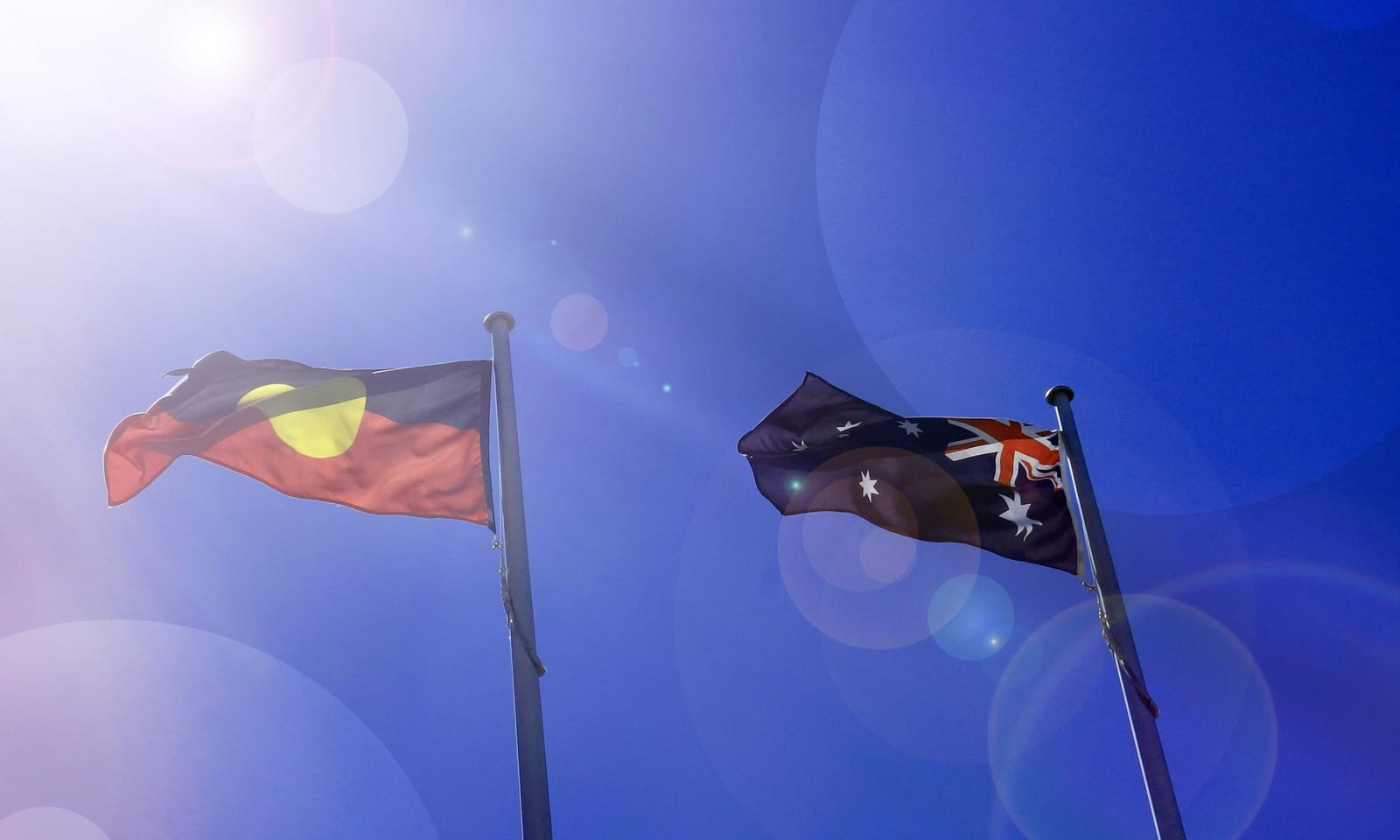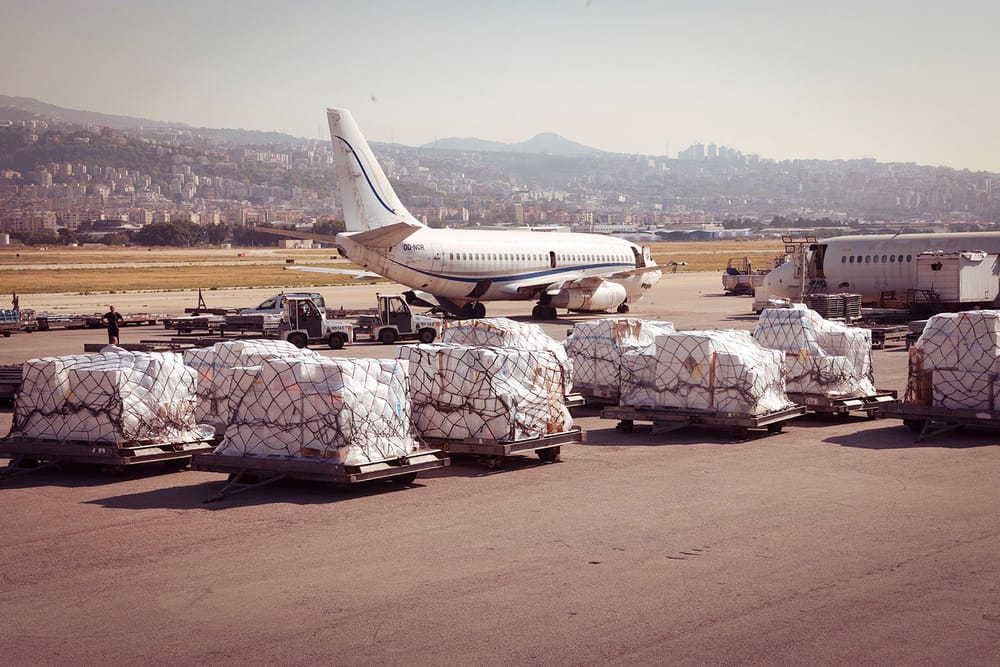Editorial note: This article uses several terms that relate to the Aboriginal and Torres Strait Islander people of Australia, including Indigenous Australians, Indigenous, First Nations, Aboriginal, and Aboriginal Australian. These terms are respectfully used interchangeably in accordance with historical references and modern practice.
The word ‘reconciliation’ is consistently used as a target for healthy relationships between Indigenous and non-Indigenous Australians, but there is a problem with using this word: its very definition is incongruous with reality.
Reconciliation (noun):
1. The restoration of friendly relations.2. The action of making one view or belief compatible with another.
If the goal of reconciliation is to construct a potential society wherein Indigenous Australians find value in being a part of it, then the latter definition is lacklustre. To be compatible is to merely coexist without necessarily valuing or caring for the coexisting belief structures. The inability to break moral ground in this manner and resign ourselves to the insipid goal of coexistence reeks of potential balkanisation.
The former definition implies that friendly relations existed in the first place. In the case of relations between Indigenous and non-Indigenous Australians—or Europeans, as they were the first non-Indigenous presence—truly unanimous friendly relations have never existed. Consider the chronicled words of Captain James Cook, credited as having “discovered” Australia for the British, who, upon his landings throughout the Pacific and Oceania, reflected:
“We enter their ports without their daring to make opposition. We attempt to land in a peaceable manner, if this succeeds it's well, if not we land nevertheless and maintain the footing we thus got by the superiority of our fire arms, in what other light can they then at first look upon us but as invaders of their country; time and some acquaintance with us can only convince them of their mistake.” (FitzSimons, 2020)
In his biography James Cook: The story behind the man who mapped the world, Peter FitzSimons further details a preliminary encounter between the British and Indigenous Australians. As two Gweagal men brandished spears at Cook and his landing party in a show of defence, Cook took it upon himself to fire a lead shot at the leg of one of the men, after repeated attempts at a peaceful landing had failed.
This very encounter is emblematic of British colonial intentions. The original aim was to settle and colonise the land for administrative and penal purposes. However, when it became evident that the existing inhabitants of the land were willing to defend their claim upon it, the British used force where needed to occupy the land. They subsequently went on to subjugate the Indigenous peoples—whom the British referred to as either ‘Natives’ or ‘Savages’—in a series of post-colonial actions, not least of which were the frontier wars that killed an estimated 17,000–30,000 Aboriginal people. This is the very act of invasion.
Unfortunately, the topic of invasion is beginning to reveal itself as another polarising aspect in Australian society. For example, the University of New South Wales, after changing its internal communication guidelines in 2016 to state ‘invasion’ when referring to Australia’s colonial history, was slammed for “whitewashing” history by the conservative press.
So it was unsurprising that this topic formed much of my conversation with Dr Richard Broome, an emeritus professor of history at Australia’s La Trobe University. He is also one of the most respected scholars of Australian Aboriginal history.
“The fact of invasion should be as plain as the nose on your face,” he tells me. “Unfortunately, it also goes to the heart of resistance in Australia [regarding Indigenous affairs].”
A poll conducted by the Australian National University in 2015 found that just one percent of respondents identified Indigenous affairs to be either the first or second most important issue in the country. Further, the same poll found that 64 percent of respondents thought that either enough or too much progress had been made on the issue of Indigenous land rights, with 30 percent of respondents also electing that recognition of Indigenous land rights was “unfair” to other Australians.
This mirrors the judgement of Broome. He says, “We have a very hardline 30 percent in Australia opposed to the truth of invasion. The passage of time may settle it, but we can’t wait for time.”
Disregard and ignorance of the historical truth of invasion is eroding the foundations upon which reconciliation is built. Reconciling this pervasive ignorance with the hopes of Indigenous peoples is an arduous prospect. Even if it could be achieved, it would not sow the seeds of unity, but mere tolerance. Instead, Australia—particularly its levels of government—ought to lead a process of harmonisation. Living in harmony with Indigenous Australians is going to require the undertaking of two simple, largely symbolic steps by non-Indigenous Australians.
Step 1: A declaration that Australia was not ‘terra nullius’ (Latin for ‘land belonging to no one’) at the time of colonisation, and constitutionally recognise that Indigenous Australians therefore hold traditional sovereignty over the land and seas.
The exact moment that terra nullius was first uttered—when referring to ‘Terra Australis Incognita’, or ‘Unknown Southern Land’—has been historically debated. Whether it was used as legal precedence to colonise the Australian continent by the British government of the day or later as a retrospective justification, the term set in motion a dispossession of epic proportions. Despite existing inhabitants—now known as the Indigenous peoples of Australia—the British did not see the need to recognise any form of prior ownership over the land. This was because, as Broome outlines in his book Aboriginal Australians, a prevailing view within international law of possession argued that:
“ . . . land was ‘waste’ until people acquired property rights through mixing their labour with the soil. The British Government . . . viewed non-farming Aboriginal people as not owning land, and therefore did not offer them a treaty.” (Broome, 2019)
This purportedly allowed the British to export, in near totality, their jurisprudence pertaining to land ownership with almost complete disregard for the needs of Indigenous Australians.
As officers and aristocracy began to “settle” the land, and freed convicts were permitted to squat on sections not already claimed, the Indigenous peoples were pushed further and further from their traditional homes, food sources and places of spiritual significance. If they ventured back onto privately held land, it was not uncommon for them to be shot on-site, as land under possession was regarded by the British as greater in value than the life of the “trespasser.”
Terra nullius has been historically used as justification to take possession of land, particularly by the British. It was used in British Columbia, Canada, as well as New Zealand’s South Island. While this legal claim was set in motion ostensibly due to superior notions of ownership, emerging historical accounts are beginning to paint a different picture. Through little hesitation in evangelising its own moral enlightenment, a supplanting society, like that of the British in the late 18th century, finds itself running headlong into the need for morally justifying its presence and rationalising its claims over jointly-occupied territory. This was coined the ‘Usurper Complex’ by French-Tunisian writer Albert Memmi and is in itself a tacit acknowledgement of wrongdoing.
In Aboriginal Australians, Broome writes:
“The British claimed to be civilised people bringing the arts and sciences to a backward land . . . [they] claimed all the trappings of a fine civilisation: Christianity, law, forms of government, technology, refined morals and manners . . . ironic then that this supposed advanced society also produced poverty, crime and inequality in England, and a penal colony in Australia.” (Broome, 2019)
Broome expands upon this point in our interview. “A lot of settlers at the time saw Indigenous Australians as traditional owners, holders, users and defenders of land,” says Broome. “Therefore, they found themselves justifying their presence by claiming superior use of the land. This is actually a perennial issue of proving Indigenous Australians as not sovereign. We have actually acknowledged, in our hearts, their sovereignty from the very beginning.”
It is worth noting now that the concept of terra nullius was judicially overturned by the High Court of Australia in the landmark series of legal cases known as Mabo v. Queensland. The plaintiffs, led by Eddie Mabo, argued that their traditional ownership, or Native title, over the Mer Islands in the Torres Strait was not extinguished by the Crown’s assumed possession. This case followed from the legacy of the watershed passing of the Aboriginal Land Rights Act 1976, which allowed the return of Crown lands as compensation for dispossession in the Northern Territory only but still did not acknowledge traditional ownership. Not only was the Mabo victory a firm dismissal of terra nullius on a national stage, but it finally recognised traditional ownership in the legal system of Australia.
Mabo also set in motion the ability for all Indigenous Australians to prove traditional significance, heritage and inheritance of land, and thus begin making claims over Crown lands and reserves, national parks and state forests, seas and inland bodies of water, as well as some non-exclusive leases. This was codified as the Native Title Act 1993 by the Labor government under Prime Minister Paul Keating.
However, it wasn’t long before the successive Liberal government amended the Act back in favour of state governments and non-Indigenous landowners. In retaliation to Wik Peoples v. Queensland, another landmark victory for Native title rights in the High Court, the Liberal government devised a ‘Ten Point Plan’ to curb the apparent slippery slope of Native title progression. This included denying Native title over waters and extirpating Native title in areas that government deemed necessary for “essential infrastructure.”
In lockstep with this was a flurry of misinformation and scare tactics by hardline conservative, yet far-reaching commentators and governments. High Court judges were lampooned by politicians. Victorian Premier Jeff Kennet pushed the patently false statement that “backyards were under threat” of being claimed by Native title, a position he later recanted. The claim was false because any valid grant of freehold land prior to ratification of the conditions within the Native Title Act 1993 was exempt from Native title claim.
This did not stop the federal government from, again, falsely claiming that up to 70 percent of Australian land was accessible to native title. The fallout of this, as noted in Aboriginal Australians, being that 56 percent of Australians polled, including 72 percent of Queenslanders, disapproved of the Wik judgement.
“You can talk about misinformation from day one, including the early day characterisation of Aboriginal Australians, the clever campaign of misinformation around the handback of Uluru and the minerals rights in the 1980s,” says Broome. “To defeat this chronic misinformation requires a concerted effort of parliament to address the facts, similar to defeating the misinformation spread by the anti-vaccination campaign we are seeing now regarding COVID-19.”
The Mabo and Wik cases effectively polarised the issue of Indigenous determination over their traditional lands and set a precedent of divergent political ideology which, until that point, had been relatively negligible. Now, progressive Labor governments profess to value and prioritise Indigenous affairs, whilst conservative Liberal governments seemingly do not. The only way forward is to break political deadlock on the matter through an official declaration that Indigenous Australians are traditional owners of the land and that the doctrine of terra nullius is defunct.
This is where an undaunted push for constitutional recognition of Indigenous Australians comes into play, removing the issue from the uncertainty of politics and embodying it into the fabric of the nation. “With constitutional recognition, Indigenous Australians will have the power of voice,” says Broome. “But the messaging of government is essential here. The rejection [of terra nullius] needs to be out there as a plain statement of fact. Only then there is a real possibility that an Indigenous voice can be realised.”
Whilst recognition of First Nations people in the preamble of the Constitution of Australia would largely be a symbolic move, it is a formal declaration of the special sovereignty held by Indigenous peoples. It also paves the way forward for more robust measures to harmonise Australia, such as an Indigenous Voice to parliament and a formal treaty between the Australian government and Indigenous Australians. This possibility is bolstered by 73 percent support for constitutional recognition in the 2015 ANU poll, though these measures, like Native title, have suffered from their fair share of resistance and misinformation.
Step 2: Establish a treaty—often referred to by its Yolngu word ‘Makarrata’—between Indigenous and non-Indigenous Australians, which honours and enshrines an Indigenous Voice to Australian parliament.
On May 26, 2017, a group of First Nations delegates convened at Uluru and, with consensus from over 1200 representatives of Indigenous Australian peoples, delivered what is now known as the Uluru Statement from the Heart. In essence, it is a declaration to non-Indigenous Australians that First Nations peoples wish for the country to unify in the process of healing.
It is also an invitation to harmonise, with two outlined conditions for reconciliation: first, to establish a Makarrata Commission to supervise the establishment of a treaty between government and First Nations; second, to constitutionally enshrine an Indigenous Voice to parliament, manifested as an Indigenous body which would provide advice, perspective and critique of laws and policies that affect Indigenous peoples.
But efforts for a treaty with Indigenous Australians have not even reached the front steps of federal politics.
The Uluru Statement from the Heart was rejected on its face by a moderate Liberal government who believed the constitutional and social amendments required to actualise the tenets of the statement would not have the support of the Australian people. Both then Prime Minister Malcolm Turnbull and current Prime Minister Scott Morrison have stated that the Voice to parliament would be effectively viewed by the Australian public as a third chamber or house to Australia’s Westminster model parliament.
The fact of the Voice being a third chamber is false. Under its current proposal, it would have no power to initiate, vote on or block bills progressing through the houses of parliament. Nevertheless, this did not stop a swirl of misinformation about Indigenous Australians potentially holding powers of veto over a democratically elected government.
Further hurdles have been added by both John Howard and Tony Abbot, two former Australian Prime Ministers within the past 15 years. Each has publicly stated that a treaty would only act to divide a nation and that a united nation does not form a treaty with itself.
“To say Australia is a united nation in the way John Howard used the phrase is false. The very process of reconciliation is a tacit admission that unity doesn’t exist. We still haven’t agreed on settlement versus invasion,” says Broome. “John Howard fears diversity and would rather Australia be homogenous. That fear is misplaced because the success of Australia can be largely attributed to multiculturalism.”
The mood for change in this area is positive. A 2019 poll published by Guardian Australia found that 66 percent of respondents were in favour of the Voice to parliament. Further, another poll by Ipsos conducted in 2020 found that 67 percent of the sample group thought a treaty with Indigenous Australians was an important step toward reconciliation (59 percent in the Guardian poll). Moreover, nearly all state and territory governments within Australia have begun the process towards treaties with their resident Indigenous peoples. “The steps taken in rejecting terra nullius and agreeing upon the fact of invasion can only be solidified when we move toward a treaty. Thankfully, the Australian states are taking a form of leadership on this,” says Broome.
But even with an incipient groundswell of support, a treaty must not be passed in stealth by a politically aligned progressive government. It must have parliamentary agreement and the confidence of the nation. Otherwise, it remains susceptible to the whims of subsequent governments; it could be overturned or amended by a conservative government in similar fashion to the Native Title Act 1993.
The Australian public has a history of quickly shifting its attitude toward social outcomes if it feels as though the cause for change has been politically hijacked. The most recent example of this is the 1999 Australian republic referendum, wherein preceding polls indicated a majority of Australians (51 percent) supported the transition to a republic, albeit with a large minority (14 percent) of undecided voters. The wording of the “republic question” indicated that a new head of state, being a president, would be appointed by parliament rather than by the people. This ploy by the sitting conservative government, who also happened to be in opposition to the republican movement, played into the distrust of politicians expressed by the public. The republicanism movement suffered a huge swing against it, and the motion was defeated in all but one of Australia's states and territories.
Interestingly, a second motion put forward in that referendum was also defeated: whether to add a preamble to the Australian Constitution. This preamble would have included acknowledgement of Indigenous Australians as “the nation's first people.” It was defeated by a 21 point majority nationally. The true challenge here is that non-Indigenous Australians, who constitute 97 percent of the Australian population, need to be convinced that a treaty is a valuable, bipartisan and worthwhile enterprise. Mainstream Australia does not want to be saddled with a burden of guilt relating to the actions of past non-Indigenous Australians; a sentiment which can be easily leveraged by a resistant government or “no campaign.” This is probably best reflected by the fact that only 28 percent of Australians agree with changing the date of Australia Day, in reference to the racially divisive nature of the current date, according to the aforementioned 2020 Ipsos poll.
The majority of Australians seem to want conditions for Indigenous Australians to improve, which may include a treaty, but history shows they also want caution worked into that improvement. Currently, 40 percent of the Australian landmass has been reclaimed through Native title. It took over two centuries of patience and resilience on the part of First Nations peoples to get there, and none of that progress is prepared to be unravelled by hysterics. As Paul Kelly acknowledged in his song ‘From Little Things Big Things Grow’, Indigenous Australians are adept in “knowing how to wait” on the shifting attitudes of the rest of Australia.
Inconvenient does not equate to ‘wrong’
Yes, this two-step process can be inconvenient to modern, non-Indigenous desires. However, so can the issues of pricing carbon, breaking up anti-competition tech companies and locking down society amidst a pandemic for the sake of the most vulnerable. Yet society continues, albeit at times begrudgingly, to unify around these causes for the sake of a wholesome future.
Recognising the inter-generational suffering of Indigenous peoples due to perennial dispossession ought to be no different. Modern-day non-Indigenous Australians may not be the original appropriators, but as they find the inherited, yet still purloined, belongings of another in their hands, they are not absolved of the moral obligation to return them. Or, at the very least, to share determination over them.
Indigenous peoples, time after time, have demonstrated how they are prepared to meet non-Indigenous Australians half-way. “It is unreasonable to expect things to go back to the way they were. Both sides need to adjust because Australian society has simply come too far,” says Broome. “But in their multiple campaigns for land rights, Indigenous Australians have requested determination over reserve and Crown land, but not for freehold title. So, in a sense, they have been more reasonable from the very beginning.”
If anyone truly seeks to decolonise their thinking, it needs to begin here.







